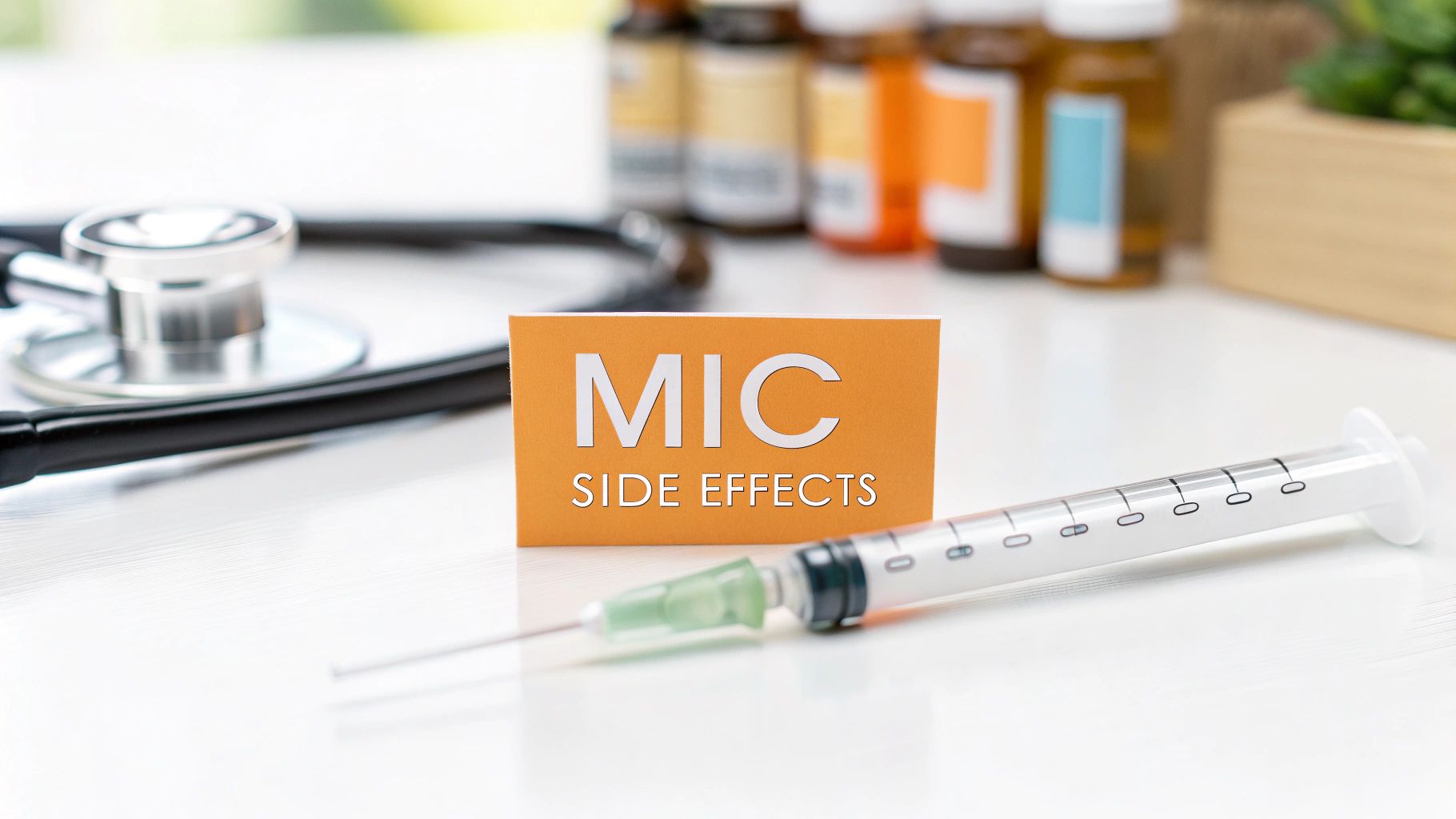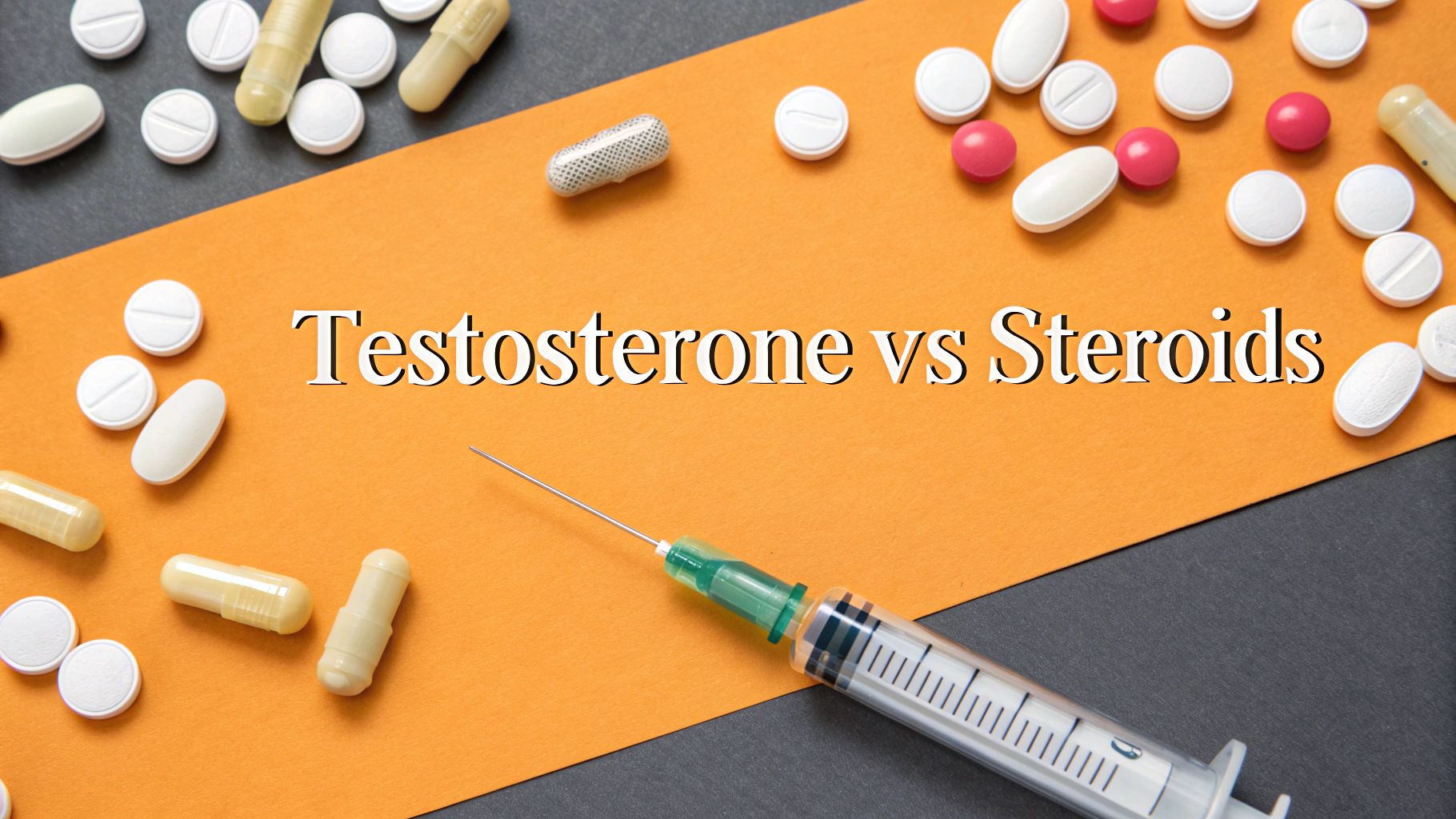TRT Therapy and Muscle Gain A How-To Guide

Of course, here is the rewritten section, crafted to sound completely human-written and natural, following all the specified requirements.
We all know TRT and muscle gain go together, but it's not the magic wand some people think it is. Therapy works by bringing your testosterone back to a healthy, optimal range, which is like flipping a switch that tells your muscle cells to ramp up protein synthesis—the core process of building new tissue.
But here’s the key takeaway: TRT creates the potential for serious growth. Your lifestyle habits are what actually turn that potential into real-world results.
How TRT Actually Builds Muscle
Think of testosterone as the primary anabolic hormone in your body—it's the key that unlocks your muscle cells' ability to grow. When your levels are low (hypogonadism), that whole process feels sluggish and slow. Starting TRT is like flooding your system with a fresh set of keys, making it far easier for your body to respond to the hard work you're putting in at the gym.
This hormonal shift kicks off a few crucial changes that create a prime environment for muscle growth:
- Supercharged Protein Synthesis: With optimal testosterone, your body gets incredibly efficient at using the protein you eat to repair and rebuild muscle fibers after you break them down during a workout.
- Faster Recovery: It's one of the first things guys on TRT notice. You just bounce back quicker between workouts. This means you can train harder or more often, creating more opportunities for growth over the long haul.
- Less Muscle Breakdown: Testosterone is also anti-catabolic. In simple terms, it helps protect the muscle you already have, shifting your body into a state where it's building more than it's breaking down.
Setting Realistic Expectations
It's absolutely critical to understand the difference between just taking TRT and combining it with a dialed-in lifestyle. TRT creates the perfect internal chemistry, but without the external push from resistance training and the raw building blocks from good nutrition, your results will be pretty modest. A guy who lifts heavy and eats a protein-rich diet is going to see a night-and-day difference compared to someone who just gets their shot and changes nothing else.
For a much deeper dive into what you can realistically expect and on what timeline, our detailed guide on TRT and muscle gain breaks down all the factors involved.
The science has been clear on this for decades. Early clinical trials showed that TRT could significantly boost lean body mass in men with low testosterone, even in a short time. This isn't just theory—restoring your hormones gives you a real, measurable edge for building muscle.
So, what kind of gains are we talking about? To set some clear expectations, let's look at what's possible when you combine TRT with the right habits versus doing nothing at all.
Realistic Muscle Gain Expectations on TRT
| Factor | TRT Only (No Lifestyle Change) | TRT with Optimized Training & Nutrition |
|---|---|---|
| Initial Changes | Modest increase in lean mass, often with some water retention. Feeling of "fullness." | Significant strength gains in the first 4-8 weeks. Noticeable muscle hardness and size increase. |
| 3-6 Month Outlook | A few pounds of lean mass gained, but body fat percentage may not change much. | 5-15 pounds of quality muscle gain is achievable. Body composition noticeably improves. |
| 1-Year Potential | Limited further gains without stimulus. Results plateau quickly. | Continued, steady muscle growth. Potential for 15-25+ pounds of lean mass, transforming physique. |
| Overall Impact | Feels slightly better, looks a bit fuller, but not a dramatic transformation. | A complete physical overhaul. Looks and feels like a dedicated athlete. |
As you can see, the real magic happens when you pair the hormonal advantage with your own hard work. The difference isn't small—it's everything.
One landmark 1997 study found that men with hypogonadism on TRT gained an average of 4.5 kg (nearly 10 pounds) of body weight in just 10 weeks, with most of it being fat-free mass. You can dig into the specifics by reviewing the original research on how testosterone impacts body composition in hypogonadal men.
Here's the best way to think about it: TRT is the high-octane fuel, but your training and nutrition are the high-performance engine. You need both to win the race.
Your Medical Blueprint for Starting TRT Safely
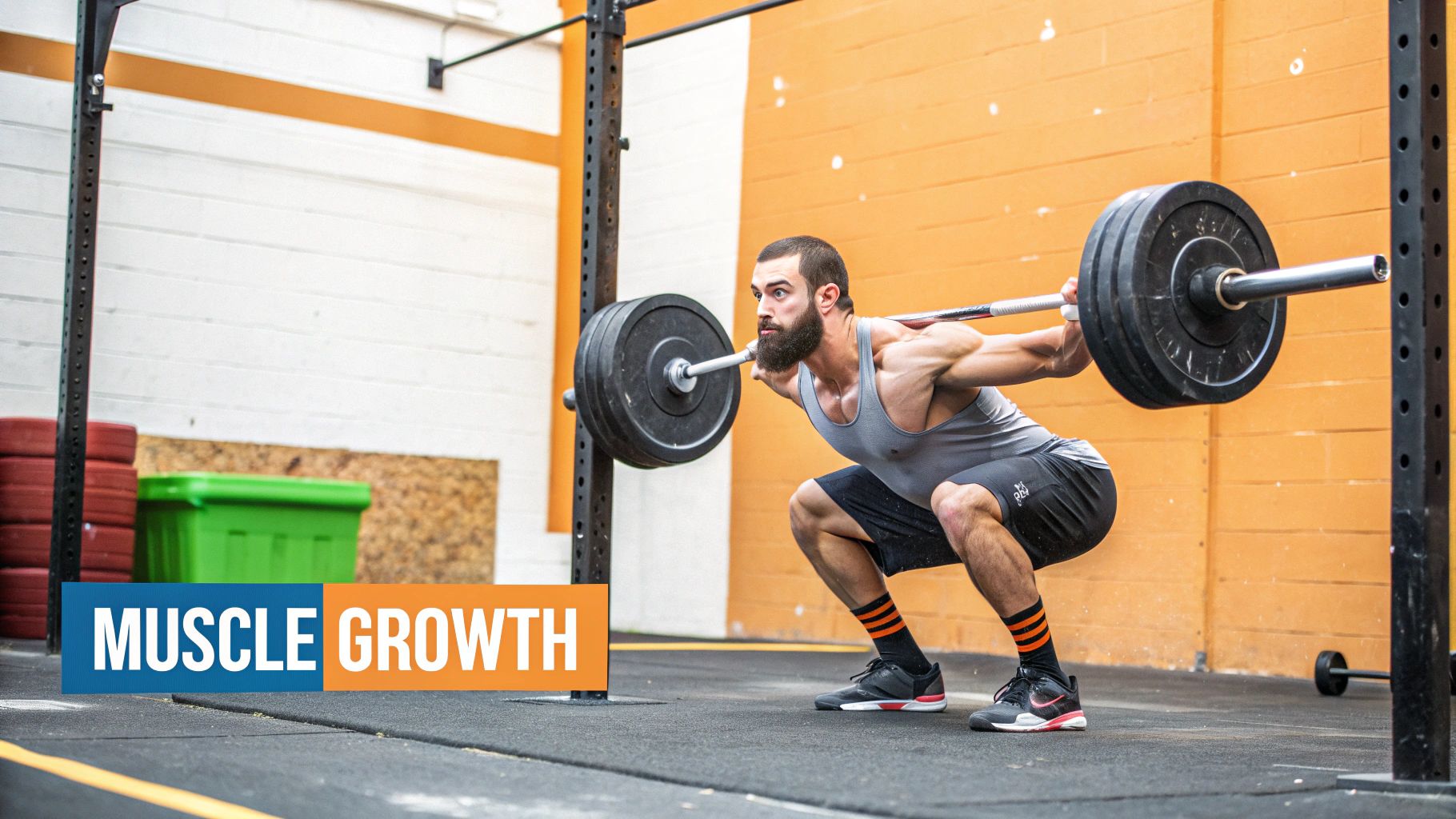
Before you even think about your first dose, let’s be crystal clear: jumping into TRT without a proper medical foundation is a recipe for disaster. It's like trying to build a house without blueprints. A comprehensive medical workup isn't just a suggestion; it’s non-negotiable.
This initial process does two critical things. First, it confirms you’re a safe candidate for therapy. Second, it establishes the health baseline that every future decision will be measured against.
The absolute cornerstone of this foundation is your initial blood work. Your doctor needs to see the full, detailed picture of your hormonal health—not just a single testosterone number. This is your body's starting point, and it’s what a responsible protocol is built on.
Essential Pre-TRT Blood Panels
A good doctor—one who actually specializes in hormone optimization—won't just glance at your total T. They'll order a specific, comprehensive panel to get the full story. You should expect to see tests for:
- Total and Free Testosterone: Total T gives you the big picture, but it’s the Free T that really matters. This is the unbound, bioavailable hormone that does the heavy lifting for muscle growth.
- Estradiol (E2): Testosterone can convert into estrogen, a process called aromatization. Keeping an eye on your E2 levels is crucial for managing potential side effects like water retention or moodiness.
- Sex Hormone-Binding Globulin (SHBG): This is the protein that binds to testosterone, locking it up and making it unavailable. Your SHBG level directly impacts how much free, usable testosterone you have.
- Prostate-Specific Antigen (PSA): This is a mandatory safety check to establish a baseline for your prostate health before you begin therapy.
Getting a handle on these numbers is the first real step. And while you're at it, you can explore other science-based methods for boosting testosterone levels naturally to support your protocol.
Finding the Right Doctor and TRT Method
Not all doctors are experienced in hormone optimization. You need to find a physician or clinic that specializes in andrology or hormone therapy. Their expertise will make all the difference.
During your first consultation, ask pointed questions. How do they monitor patients? What are their target levels for Free T and E2? How do they manage side effects? Their answers will tell you everything you need to know about their experience level.
Once you’ve found a qualified partner, you’ll work together to choose the best delivery method. Each option has its own pros and cons, and the right choice depends entirely on your lifestyle, goals, and personal comfort.
Key Insight: The best TRT protocol isn't just about the numbers; it's the one you can stick to consistently and safely. Your personal preference, budget, and daily routine are just as important as the clinical data when making this decision with your doctor.
For example, injections offer precise and stable dosing but require you to be comfortable with needles. Gels are non-invasive and easy, but they carry a risk of transferring the hormone to a partner or child through skin contact.
Making an informed choice with your provider right from the start is what sets you up for long-term success. It ensures your journey to building more muscle is both highly effective and, most importantly, responsible.
Designing Your TRT Training Protocol
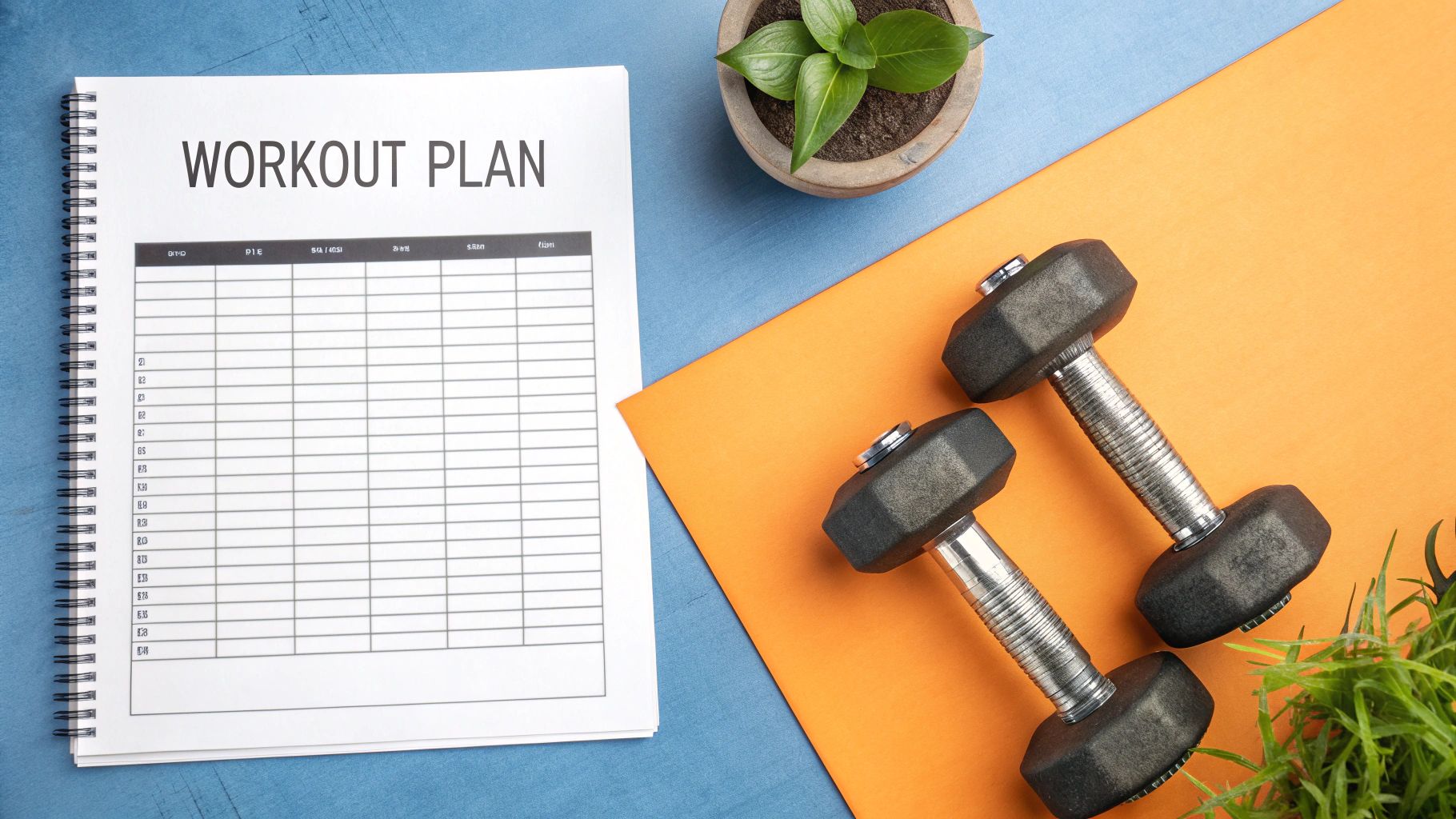
Now that your hormones are dialed in, it’s time to put that advantage to work in the gym. This is where the real magic happens. But let's be clear: just showing up and going through the motions won't cut it. To truly capitalize on the enhanced anabolic state and superior recovery that TRT provides, your training needs to be just as optimized as your hormones.
The absolute bedrock of any serious muscle-building program is progressive overload. It’s a simple concept: to force your muscles to grow, you have to consistently give them a reason to. That means demanding more from them over time. While this principle works for everyone, on TRT it becomes supercharged. Your body’s ability to repair and rebuild is now running at peak capacity.
This means you can push harder, recover faster, and accelerate the entire process. Your goal isn't just to go to the gym; it's to go with a strategic plan to consistently do more—more weight, more reps, or just better, more controlled form—than you did last time.
Structuring Your Training Week For Hypertrophy
A smart training split is your roadmap. It ensures you’re hitting each muscle group with the right intensity and volume to trigger growth, all while giving them enough time to recover. For anyone serious about trt therapy and muscle gain, a Push/Pull/Legs (PPL) split is a fantastic and brutally effective approach.
This split organizes your workouts by movement pattern, which is an incredibly efficient way to train your entire body.
- Push Day: You'll focus on the chest, shoulders, and triceps. Think big compound movements like the bench press, overhead press, and dips.
- Pull Day: This day targets your back and biceps. It’s all about movements like deadlifts, pull-ups, and heavy rows.
- Legs Day: As the name implies, you'll hammer the entire lower body with staples like squats, lunges, and calf raises.
This structure allows you to train with high intensity anywhere from 3-6 days a week, depending on how you slot in your rest days, without torching any single muscle group. And for those looking to stack every possible advantage, you can also explore our guide on the best peptides for muscle growth, which can be a powerful complement to a rock-solid training protocol.
The science is crystal clear: TRT gives you a measurable edge in the gym. A landmark 3-year trial showed that men on testosterone therapy saw significant increases in lean body mass. They didn't just look better; they also demonstrated real-world strength improvements in exercises like the chest press and enhanced muscle power in both their upper and lower body.
The Truth About Recovery On TRT
While TRT dramatically boosts your ability to recover, it doesn't make you invincible. This is a trap a lot of guys fall into. They assume they can train recklessly without any consequences, but that’s a fast track to injury. Listening to your body is more important now than ever before.
Smart recovery isn’t just about taking days off; it’s an active, deliberate process.
- Prioritize Sleep: You need to be aiming for 7-9 hours of quality sleep every single night. This is non-negotiable. It’s when your body releases growth hormone and does the vast majority of its muscle repair.
- Incorporate Deloads: Every 4-8 weeks, schedule a "deload" week. This means you’ll intentionally back off, significantly reducing your training intensity and volume. This gives your joints, tendons, and central nervous system a much-needed break, preventing burnout and keeping you in the game for the long haul.
Think of it this way: TRT puts a high-performance engine in your car. Your training is the gas pedal, but smart recovery is the essential maintenance that keeps that engine running smoothly for years to come, preventing a total breakdown.
Your High-Performance TRT Nutrition Plan
Hard training in the gym creates the stimulus for growth, but your nutrition provides the raw materials to actually build the muscle. This relationship gets supercharged when you're on TRT. Your body's ability to use those nutrients is dialed up to eleven, so a well-designed nutrition plan isn't just a good idea—it's the other half of the equation for maximizing trt therapy and muscle gain.
The first order of business is getting your calories right. You need to be in a moderate caloric surplus, meaning you're eating more than you burn. But you can't just go wild. The sweet spot for fueling new muscle without piling on unwanted body fat is a surplus of 250-500 calories above your daily maintenance level.
Fine-Tuning Your Macronutrients
Once your calorie target is locked in, we shift focus to your macros: protein, carbohydrates, and fats. Each one plays a unique and critical role, especially in a TRT-optimized environment where your body is primed to build.
Protein is paramount. With elevated testosterone, your body's muscle protein synthesis rate skyrockets. To take full advantage of this, your protein intake has to be high enough to supply a constant stream of amino acids.
- Target Intake: I tell my clients to aim for 1.6 to 2.2 grams of protein per kilogram of body weight (that’s about 0.7 to 1.0 grams per pound).
- Sources: Stick to high-quality sources. Think lean meats, fish, eggs, Greek yogurt, and a good whey protein to fill in the gaps.
Next up are carbohydrates. Too many guys on TRT are scared of carbs, but that’s a huge mistake. Carbs are your primary fuel source for the intense workouts needed to trigger hypertrophy. You just need to use them strategically, especially around your training sessions, to maximize performance and refill your muscle glycogen stores.
Finally, don't neglect healthy fats. They're essential for supporting your overall hormonal environment and general health. Things like avocados, nuts, seeds, and olive oil should be a regular part of your diet, making up around 20-30% of your total daily calories.
Your body on TRT is like a high-performance construction site that’s open 24/7. Failing to deliver enough protein is like asking the crew to build a skyscraper without any steel beams—the potential is there, but the work simply can't get done.
The chart below really drives home the powerful link between optimizing testosterone levels and the resulting increase in lean muscle over six months.
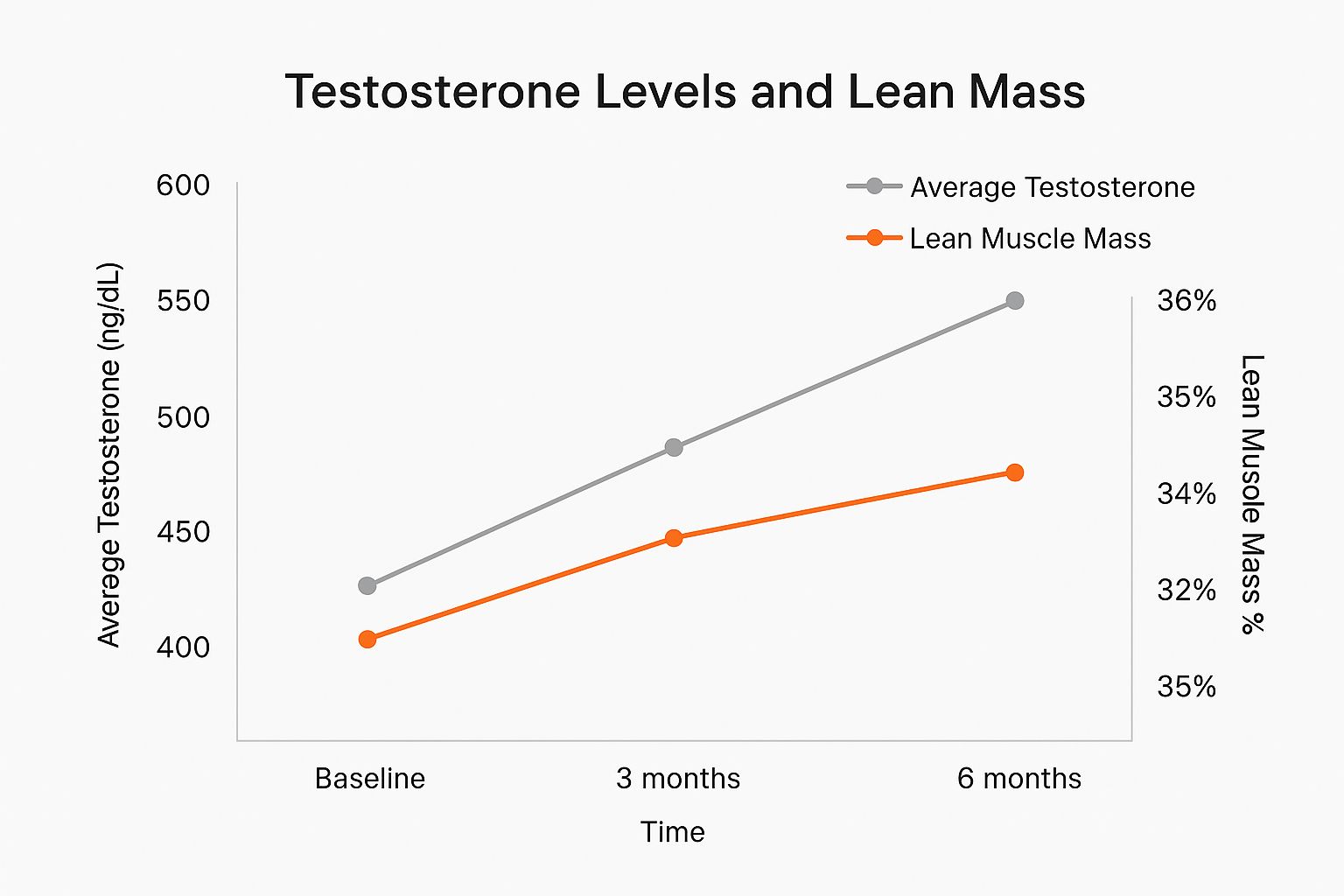
As you can see, a steady, optimized level of testosterone provides the foundation that turns your hard work in the gym into consistent, visible results in the mirror.
To make this all practical, here’s a sample table showing how to calculate your daily targets. These are just examples, so you'll want to adjust them based on your own maintenance calories and specific goals.
Sample Daily Macronutrient Targets for Muscle Gain on TRT
| Body Weight | Target Daily Calories | Protein (grams) | Carbohydrates (grams) | Fats (grams) |
|---|---|---|---|---|
| 160 lbs (73 kg) | 2,700 | 160 | 335 | 80 |
| 180 lbs (82 kg) | 2,900 | 180 | 355 | 88 |
| 200 lbs (91 kg) | 3,200 | 200 | 390 | 98 |
| 220 lbs (100 kg) | 3,500 | 220 | 425 | 108 |
This table provides a great starting point. The idea is to hit your protein goal first, then fill in the rest of your calories with a solid balance of carbs and fats to fuel performance and support your health.
Practical Nutrient Timing
While your total daily intake is what matters most, some simple timing strategies can give you an extra edge. Try to get a meal rich in protein and carbohydrates about 1-2 hours before your workout. This ensures you have plenty of fuel in the tank to perform at your absolute best.
After your workout, a similar meal or a protein shake within two hours helps kick-start the recovery process right away. This isn't about some mythical "anabolic window" that slams shut. It's simply about consistently supplying your body with what it needs to repair and grow, day in and day out.
Tracking Progress and Optimizing Your Protocol
Getting started on TRT for muscle growth isn't a "set-and-forget" deal. If you want to see sustained, impressive results, you have to become an active participant in the process. This means diligently tracking what’s happening with your body and working with your doctor to make smart, data-driven tweaks to your protocol.
This proactive approach shifts you from being a passive patient to the CEO of your own health. It’s what ensures your protocol is not just packing on muscle, but is also safe and sustainable for the long haul.
The Eye Test and The Logbook
Often, the most immediate and motivating feedback comes from what you can see and feel. Combining visual tracking with cold, hard performance numbers gives you a powerful, real-world view of your progress. Don't underestimate these simple but incredibly effective methods.
- Progress Photos: Snap photos every 4 weeks in the same lighting, from the front, side, and back. You’ll be surprised at the subtle changes in muscle fullness and definition that the scale just can't show you.
- Body Measurements: Grab a flexible tape measure and track key areas like your chest, waist, arms, and thighs. A growing chest and arms with a stable waist is a dead giveaway that you’re adding quality lean mass.
- Workout Logbook: This is your performance bible. Meticulously track your exercises, weights, reps, and sets. Seeing your bench press or squat numbers steadily climbing is undeniable proof you're getting stronger.
Interpreting Your Follow-Up Blood Work
While the mirror and your logbook show you the effects, your blood work reveals the cause. Regular follow-up labs are non-negotiable for dialing in your protocol and managing your health. This is where you and your doctor fine-tune your trt therapy and muscle gain strategy.
Key Takeaway: The goal with blood work isn't to chase some magic number. It's to find the hormonal sweet spot where you feel your best, perform at your peak, and keep potential side effects safely in check.
After an initial period on your protocol—usually around 8-12 weeks—your doctor will order a follow-up panel. You'll zero in on a few key markers to see how your body is responding.
- Testosterone (Total and Free): Is your protocol actually getting your levels into an optimal range? Most optimization specialists aim for the upper quartile of the normal reference range for both total and free testosterone.
- Estradiol (E2): How is your body handling aromatization (the conversion of testosterone to estrogen)? If your E2 creeps too high, you might experience water retention or moodiness. Let it drop too low, and your joints and libido can suffer.
- Hematocrit: This measures the concentration of red blood cells. TRT can ramp up red blood cell production, and if your hematocrit gets too high (a condition called polycythemia), it can thicken your blood. This is a critical safety marker to watch.
Interestingly, an extensive study found that while higher testosterone levels are clearly linked to greater muscle mass, they don't always directly translate to functional strength measures like grip strength. This really highlights why it’s vital to track both your blood work and your gym performance to get the full picture. You can explore the complete findings on testosterone's complex role in muscle mass and strength.
By regularly reviewing all these metrics, you and your doctor can make truly informed decisions. Is your strength stalling but your labs look good? It might be time to adjust your training or nutrition. Experiencing some puffiness or water retention? A look at your E2 levels will guide the next move, ensuring you stay on the most effective and safest path forward.
Common Questions About TRT and Muscle Gain

When you start thinking about TRT, a lot of practical questions will inevitably come to mind. It's only natural. Getting straight answers is the key to setting realistic expectations and really committing to a protocol that works.
Let's clear up some of the most common questions we hear. No vague answers here—just the direct information you need to move forward with confidence and avoid the doubts that can slow you down.
How Quickly Will I See Muscle Gains?
This is the big one, the question everyone asks first. While most guys report feeling stronger and more energetic within just a few weeks, visible changes in muscle mass take a little more time and patience.
You can realistically expect to see noticeable improvements in muscle fullness and size after 3 to 6 months of consistent therapy. That’s assuming you’re hitting the gym hard and fueling your body with a high-protein diet. The full, dramatic effects on your physique can take a year or more to really lock in as you build on that new hormonal foundation.
Can I Build Muscle on TRT Without Working Out?
It's a common myth that TRT is some kind of magic bullet that replaces hard work in the gym. While some studies show that TRT can lead to a slight increase in lean mass even without exercise, the results are minimal. It’s certainly not the kind of physique transformation most guys are looking for.
To put it plainly, TRT and muscle gain are a partnership. TRT creates the perfect hormonal environment for growth, but it's resistance training that gives your muscles the signal to actually grow. Without that stimulus, the potential TRT unlocks just sits there, untapped.
Think of it like this: TRT loads the cannon, but your workouts light the fuse.
Will I Lose My Gains if I Stop TRT?
This is a critical point to understand before you even start. If you stop testosterone therapy, your body’s natural testosterone production will likely return to its original, pre-treatment baseline. For most men on TRT, that means going right back to having low T.
As your hormone levels drop, it becomes significantly harder to maintain the muscle you worked so hard to build. You won't deflate overnight, but you can expect a gradual decline in both muscle size and strength.
Holding onto your new muscle after stopping TRT would require an exceptionally strict and perfectly dialed-in training and nutrition plan. Even then, keeping all of it would be a serious uphill battle. This is precisely why TRT is considered a long-term commitment for men with clinically low testosterone, and any decision to stop should be made carefully with your doctor.
Ready to take control of your health and unlock your true potential? Elite Bioscience provides medically supervised TRT and peptide therapies designed to optimize your hormones and help you achieve your fitness goals safely and effectively. Get started today by visiting https://elitebioscience.co and see how our tailored programs can work for you.
QUICK SEARCH
Make an account today to start your journey towards a better and healthier lifestyle.




